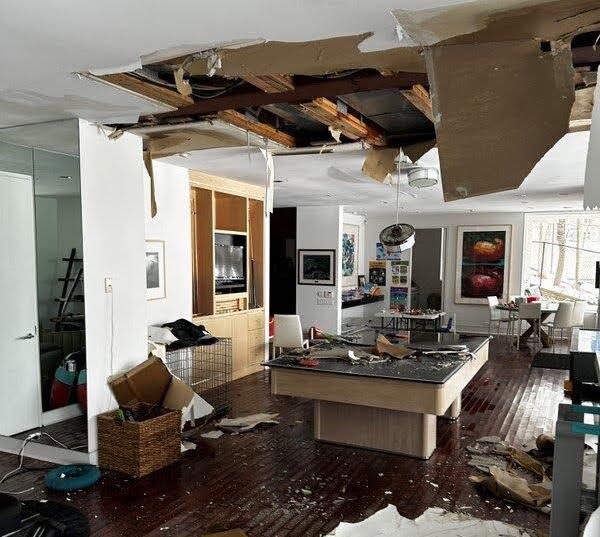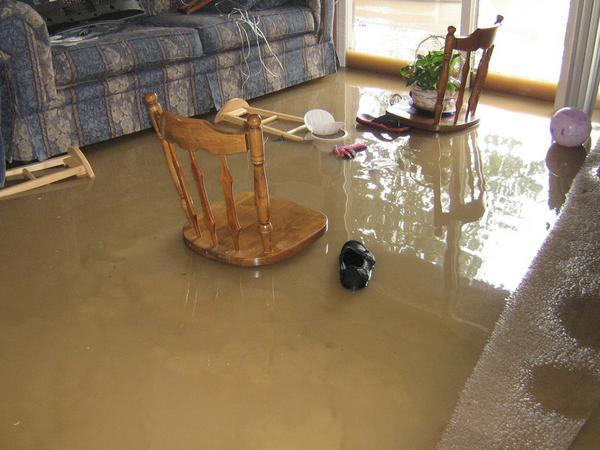Full-Spectrum Water Damage Repair Services for Complete Property Restoration
Full-Spectrum Water Damage Repair Services for Complete Property Restoration
Blog Article
The Refine of Water Damage Clean-up: Guaranteeing Your Home Is Brought Back Efficiently
Water damages can be an overwhelming difficulty for homeowners, necessitating a precise and organized cleanup procedure to recover safety and capability. A thorough assessment is critical to identify the degree of the damage and establish the ideal removal measures. Following this, efficient water extraction techniques play an essential role in alleviating additional injury. However, the nuances of drying, disinfecting, and eventual restoration are similarly vital and usually neglected. Comprehending these stages can make a substantial difference in the outcome of your home's reconstruction, prompting a closer take a look at what each step involves.
Examining the Damage
Upon discovering water damages, the primary step is to thoroughly examine the degree of the impact. This first evaluation is important, as it assists establish the necessary actions for effective cleaning and remediation. Begin by examining the impacted areas, including wall surfaces, ceilings, floors, and personal valuables, to determine the source of the water breach, whether from flooding, leakages, or condensation.
Recording the damage is crucial for both insurance policy cases and planning repair initiatives - damage restoration services. Use photos and created notes to record the seriousness of the damage, keeping in mind any type of afflicted architectural components and materials. Pay special attention to locations that may not be quickly noticeable, such as behind walls and under carpetings, as hidden wetness can cause further problems, consisting of mold growth
Additionally, assess the timeline of the water exposure. The longer the materials stay damp, the greater the possibility for damages. Understanding the period of exposure will certainly educate the necessity of remediation initiatives. Ultimately, an extensive analysis prepares for an effective water damages cleanup process, making certain that all impacted locations are attended to efficiently and thoroughly.
Water Extraction Strategies

Specialists usually employ completely submersible pumps for larger volumes of water, which can swiftly relieve flooding in basements or various other impacted areas. For smaller sized amounts, wet/dry vacuums are often utilized to remove residual wetness from rugs and tough surfaces. In addition, making use of portable extractors allows for targeted elimination in constrained rooms or areas with fragile products.
In circumstances of infected water, such as sewage or floodwater, progressed removal strategies may entail the use of biohazard devices to ensure security and compliance with health regulations. High-powered removal tools are essential in lessening water retention in structural materials, which can lead to mold growth and structural damage if not attended to quickly.
Ultimately, the effectiveness of water removal techniques plays a pivotal duty in the general success of the water damage clean-up process, laying the groundwork for subsequent reconstruction initiatives.
Drying and Dehumidification
As soon as standing water has actually been efficiently extracted, the next important phase in the water damage cleaning procedure is drying out and dehumidification. This step is vital to avoid further damages and mold development, which can take place within 24 to 48 hours in damp environments.
To accomplish reliable drying out, customized tools such as industrial-grade air moving companies and dehumidifiers is used. Air moving companies flow air throughout wet surfaces, enhancing dissipation rates, while dehumidifiers decrease moisture levels airborne, advertising a helpful atmosphere for drying. The combination of these tools makes sure that moisture is extracted from home furnishings, wall surfaces, and floors, allowing them to completely dry completely.
It is essential to monitor the drying out process carefully. Experts commonly make use of dampness meters to analyze the wetness web content in numerous materials, ensuring that all get redirected here impacted locations reach acceptable dryness degrees. This thorough method aids to prevent surprise moisture pockets that might lead to structural damage or unhealthy mold and mildew development.

Cleansing and Sanitizing
After the drying out and dehumidification stage is complete, the next vital step in water damages clean-up is cleaning up and sanitizing the impacted locations. This procedure is critical to protect against the development of mold, microorganisms, and other microorganisms that grow in moist settings.
The cleaning phase normally involves removing any debris, dust, and impurities from surface areas making use of specialized cleaning up representatives. For hard surface areas, a combination of soap and water or business cleaning items is commonly employed. Soft products, such as furniture and carpetings, might call for a lot more extensive cleansing techniques, consisting of heavy steam cleansing or deep removal methods, to make sure detailed sanitation.

Disinfecting adheres to cleansing, making use of EPA-approved disinfectants to remove unsafe microorganisms. This action is necessary, specifically in areas that might have entered call with floodwaters or sewage, as these resources can position significant health and wellness risks.
Furthermore, it is very important to deal with any continuing to be odors, which may require the usage of other odor neutralizers or advanced techniques like ozone treatment. Correct cleaning and sanitizing not just bring back the safety and health of your home yet also lay the foundation for successful repair and fixings in subsequent phases of the water damages clean-up process.
Remediation and Fixings

As soon as the assessment is total, restoration initiatives can begin. find out here This typically entails fixing or replacing damaged products, guaranteeing that all work follows local building codes and criteria. For circumstances, if drywall has actually been compromised, it will need to be removed and replaced with new product. Furthermore, flooring may require comparable attention, relying on the degree of water exposure.
It is essential to involve skilled reconstruction professionals during this procedure, as they possess the experience to manage complex repairs effectively. They can help mitigate possible future issues, such as mold and mildew development or architectural instability, therefore making sure a habitable and safe living setting. Inevitably, reliable restoration and repair work recover the home's honesty and boost its general worth.
Final Thought
Finally, the procedure of water damage cleanup is important for bring back a home to its pre-damage condition. Each phase, from evaluating the damages to applying reliable water removal techniques, followed by comprehensive drying out, disinfecting, and needed fixings, plays an important duty in making certain security and compliance with structure criteria. Reliable execution of these actions not just reduces immediate damages but additionally improves the long-term stability and worth of the residential or commercial property.
Water damage can be a challenging difficulty for property owners, demanding a careful and structured cleaning process to restore security and performance. Ultimately, a comprehensive assessment lays the foundation for an effective water damage cleaning procedure, guaranteeing that all impacted areas are dealt with successfully and extensively.
Reliable water removal methods are necessary in mitigating damage and avoiding further issues following a water intrusion occasion.In conclusion, the procedure of water damages cleanup is critical for restoring a home to its pre-damage condition. Each phase, from assessing the damage to implementing effective water extraction strategies, complied with by detailed drying out, sanitizing, and required repair services, plays a vital function in making certain safety and security and compliance with structure standards.
Report this page